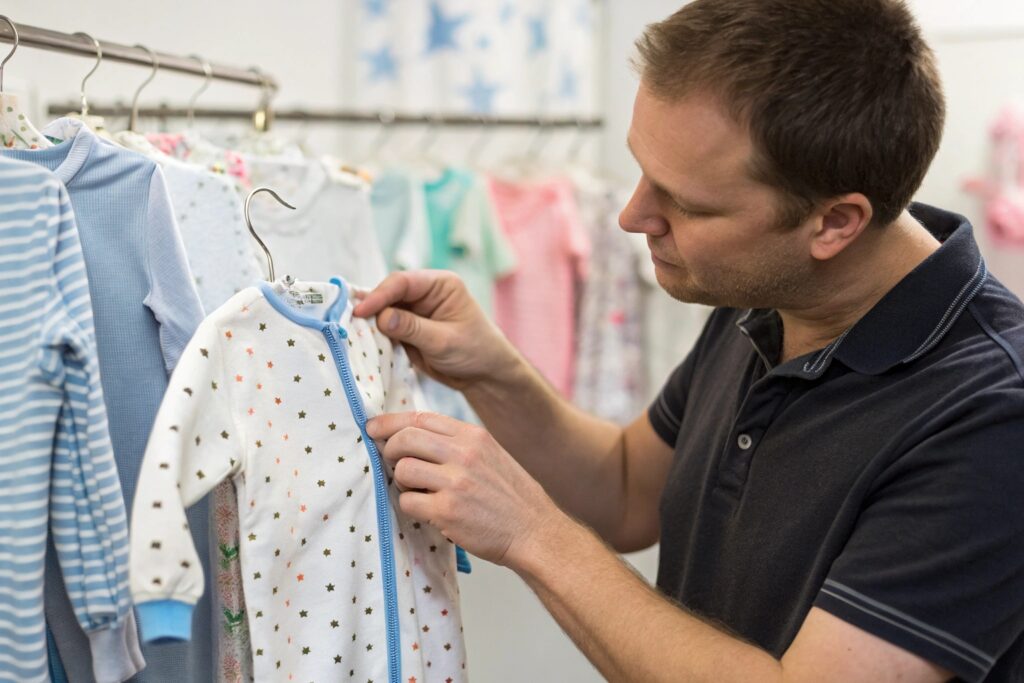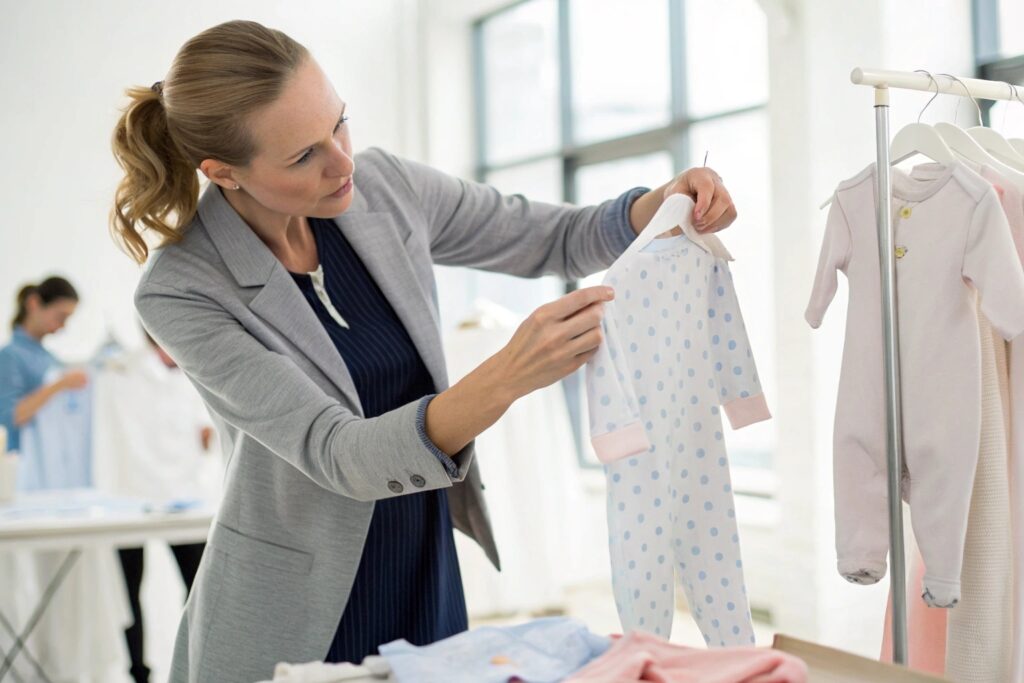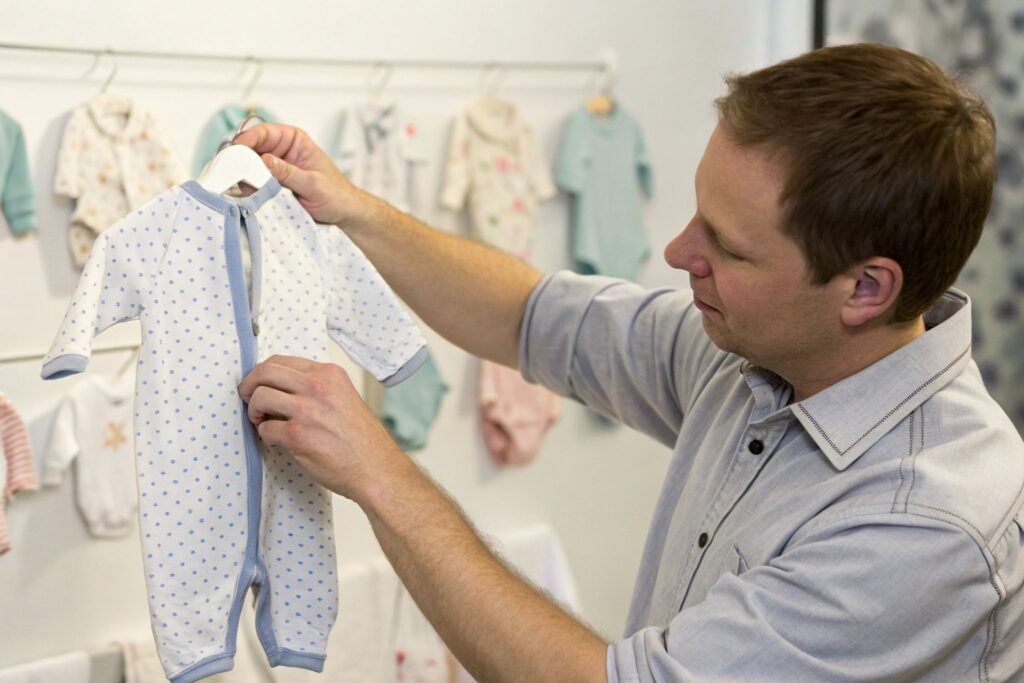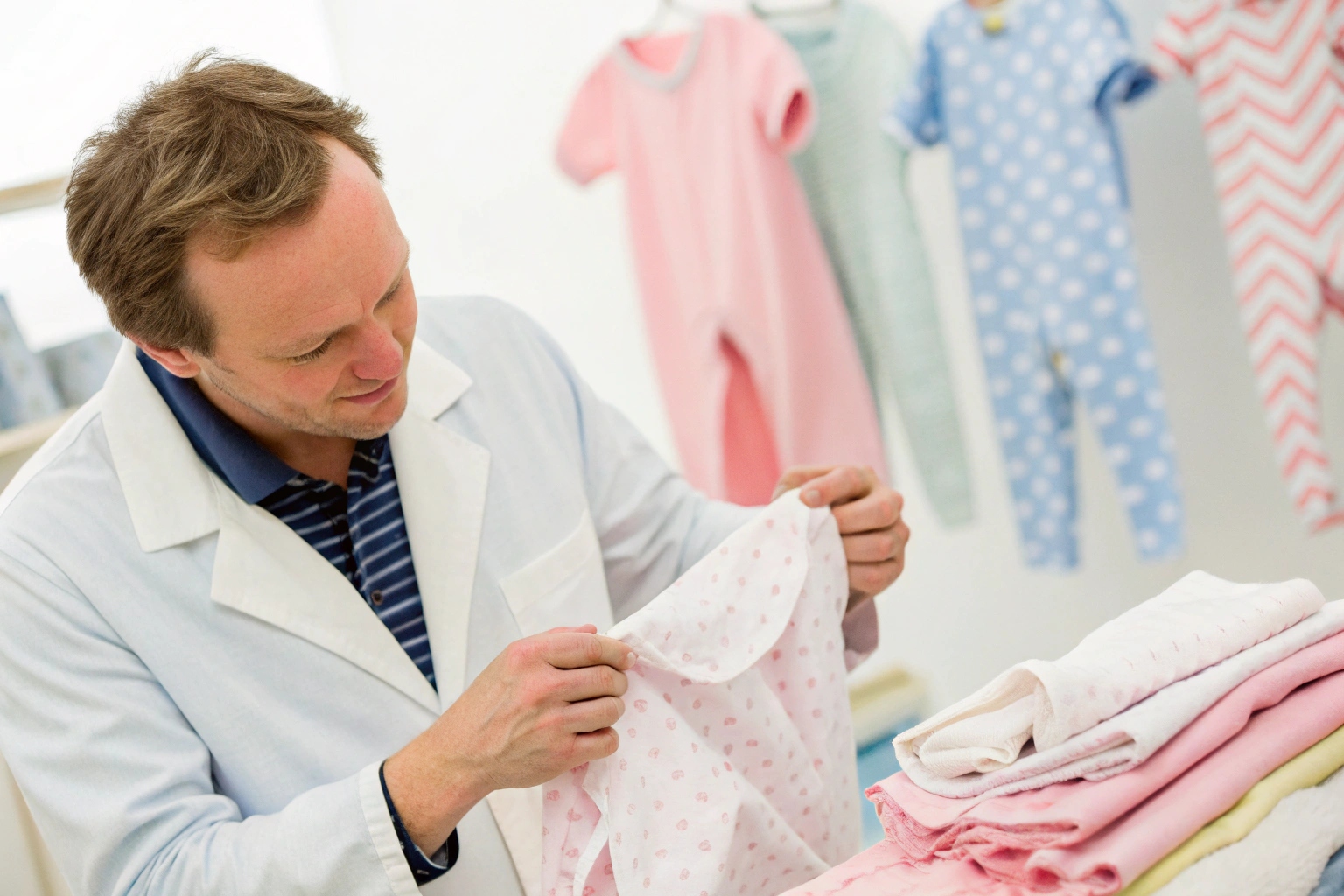In babywear, every detail matters—from stitching strength to snap safety to skin-friendly fabrics. Sampling is where those critical standards are tested before mass production begins.
Sampling matters in baby clothing development because it ensures correct fit, safety compliance, and material quality, helping brands catch problems early and build better final products.
Let’s break down why no serious babywear brand skips this essential stage.
How Sampling Helps Ensure Babywear Fit, Comfort, and Safety?
Fit and comfort aren’t just nice-to-haves in babywear—they’re essentials. Poor fit or rough fabrics can cause irritation or even safety risks for infants.
Sampling helps ensure babywear fit, comfort, and safety by allowing brands to physically check garment proportions, seam placements, fabric softness, and trim functionality before large-scale production.

Key elements tested during sampling:
| Feature | Why It’s Critical in Babywear |
|---|---|
| Fit and sizing | Ensures clothes aren’t too tight, short, or long |
| Seam placement | Prevents skin irritation from bulky seams |
| Fabric softness and breathability | Keeps delicate baby skin comfortable |
| Snap, button, and zipper safety | Prevents choking hazards or breakages |
| Stretch and recovery | Allows movement without garment distortion |
Sampling provides a real-world trial of how the clothing will interact with tiny, sensitive bodies—not just how it looks on a sketch.
At Fumao, we encourage brands to physically stretch, tug, and test samples like parents would.
Why Early Prototypes Reduce Production Mistakes and Delays?
It’s far cheaper and faster to fix a problem on a sample than after hundreds of garments are sewn. Early mistakes cost pennies; production mistakes cost thousands.
Creating early prototypes allows brands to catch and correct design flaws, fit issues, or construction errors before mass production—saving time, money, and reputation.

How early sampling prevents bigger problems:
| Sampling Catch | How It Saves the Project |
|---|---|
| Wrong sizing | Prevents full batch of unusable garments |
| Uncomfortable seams | Redesign before poor customer reviews |
| Incorrect fabric weight | Avoids overheating or flimsy feel |
| Trim failure (snap, zipper) | Prevents dangerous product recalls |
| Missing labeling compliance | Fixes legal risks before shipment |
Typical issues caught at prototype stage:
- Sizing inconsistency across age ranges
- Fabric shrinkage after washing
- Snap pull failures under pressure testing
- Rough elastic exposure at leg or waist openings
Without sampling, these mistakes often only surface after launch—when it’s too late (and too expensive) to fix easily.
What to Look for When Reviewing Babywear Samples?
Not all samples are created equal. A careful review checklist ensures nothing important gets missed.
When reviewing babywear samples, brands should check fit on real babies or fit mannequins, inspect stitching and trims carefully, test fabric shrinkage, and verify all safety features.

Babywear sample review checklist:
| Review Area | What to Check |
|---|---|
| Fit and movement | Room for diapers, shoulder and leg movement |
| Seams and labels | No roughness or scratchy points |
| Snaps, buttons, zippers | Secure attachment; smooth operation |
| Fabric after washing | Minimal shrinkage, colorfastness |
| Labeling | Correct size, fiber content, care instructions |
Pro tips:
- Simulate real-world use: Snap, unsnap, stretch, and wash samples before approving.
- Use live model fittings whenever possible—not just hangers or mannequins.
- Photograph problem points clearly when giving revision feedback to factories.
At Fumao, we supply clients with a Sample Review Report Template to help organize and track feedback efficiently.
How Sampling Strengthens Communication Between Brands and Factories?
Strong sampling processes do more than improve products—they strengthen relationships.
Sampling strengthens communication by creating clear feedback loops between brands and factories, helping set shared expectations about quality, timelines, and standards before large-scale production begins.

Why good sampling communication matters:
| Benefit | How It Helps Both Sides |
|---|---|
| Aligns on quality standards | Fewer surprises during mass production |
| Clarifies ambiguous design notes | Less misunderstanding about intent |
| Builds mutual trust | Factory learns brand’s preferences |
| Speeds up future production | Fewer approvals needed once trust is built |
Best practice: Summarize sample feedback in writing (with annotated photos if needed) and have both sides confirm understanding before the next step.
Many Fumao clients report that sampling rounds—while sometimes tedious—dramatically improve both quality and speed by the second or third collection.
Conclusion
Sampling is not a luxury—it’s the foundation of successful babywear development. From fit and safety testing to communication strengthening, good sampling protects your brand, saves money, and ensures that every piece you launch earns parent trust and loyalty.










